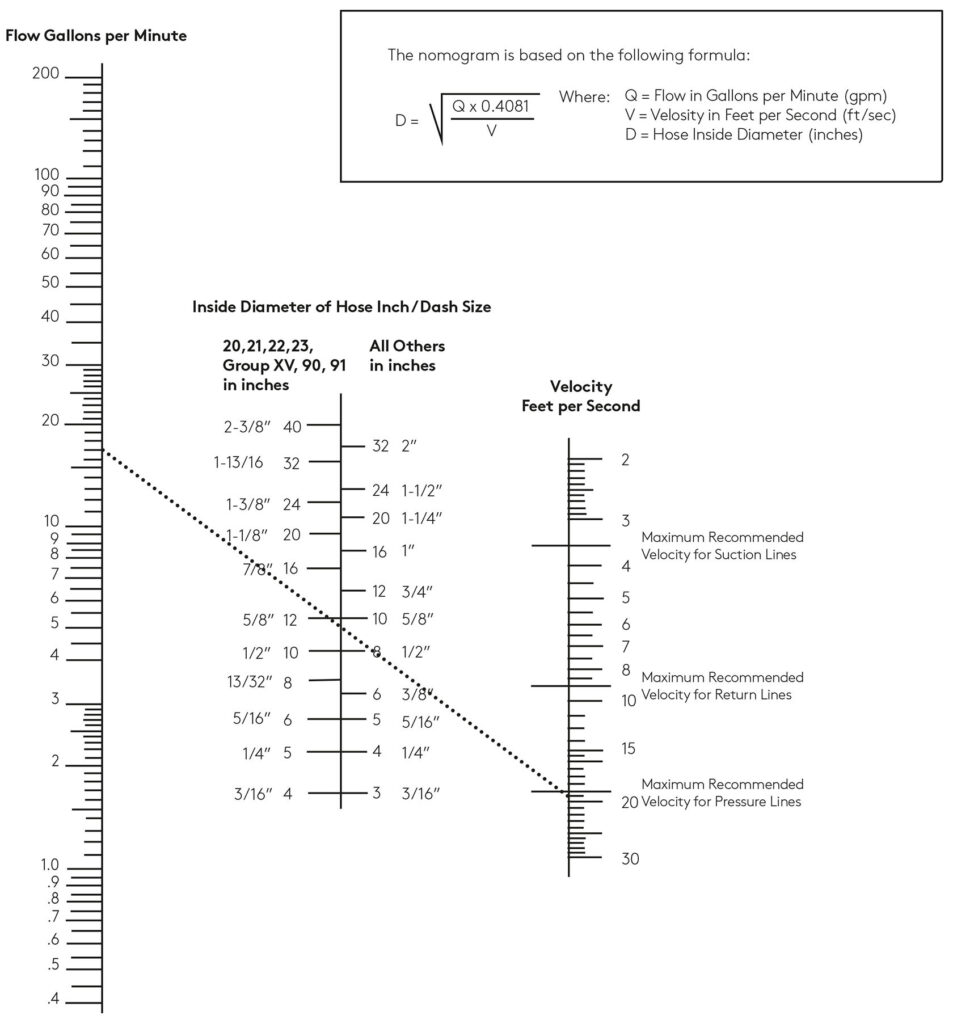Sizing is the most basic and essential factor of hydraulic hose selection. The right size of hose ensures greater efficiencies in your hydraulic fluid systems.
It is important that you determine the right hydraulic hose size. This will increase system efficiency. There would be almost no pressure drops or fluctuations. This in return leads to a longer working life of the hose assembly and reduces possible chances of damages. One of the best ways to determine the hydraulic hose size is by using nomogram.
Follow these three steps, it will help you determine the right hydraulic hose size for your hydraulic system.
Step 1 - Basic Hose Specifications
To determine the size of your hydraulic hose, these are the three basic hose specifications you need;
- Inner Diameter (ID) – It is the measurement of the empty space in a circular hose cross section. The fluid passes through this space and it has a direct impact on flow velocity. An oversized ID can lead to sluggish system performance, while and under sized ID can lead to excessive pressure drops, leaks and system damage. Therefore, getting the ID correct is very critical.
- Outer Diameter (OD) – It is the measurement of the entire span of the hose cross section and it includes the tube, reinforcement and the cover. The difference between ID and OD is the thickness of hose wall. OD is important for determining appropriate fittings and system components.
- Length of Hydraulic Hose – It is defined as the maximum reach between the end points. Increasing the length can also lead to increasing pressure drop in the system. Hose length contributes to head loss due to friction.

Step 2 - Identify Dash Size
Dash size is an industry standard for measurement of Inner Diameter (ID) of the hydraulic hose or fitting, where every increment represents a change in value by 1/16″.
For Example: Dash size 4 or -4 would indicate a hose with ID of 4/16″ or 1/4″.
Hoses are measured by inside or inner diameter (ID), unlike tubes which are measured by the outer diameter (OD).
Converting a dash size to inches and/or millimetres is very simple. You can use the formula or the conversion chart.
Dash Size 1 = 1*1/16 = 1/16″
Dash Size 2 = 2*1/16 = 1/8″
Dash Size 3 = 3*1/16 = 3/16″

All our hose product pages have the tables showing complete specifications. View our extensive hydraulic hose and assembly offerings.
Step 3 - Determine Dash Size for your Specific Hydraulic Application (Using Nomogram Chart)
By using the following standard nomogram, we can find the relationship between three variables by using a simple geometric construction. In the standard hose sizing nomogram we have three variables, Dash Size (Hose ID), Desired Flow Rate and Recommended Flow Velocity. If any two variables are known, then you can easily determine the third one.
If you are wondering how to use the nomogram shown below, then follow these steps,
- Pick your two known variables.
- Lay a straightedge, intersecting the two values.
- Point of Intersection on the third vertical line is the value of the unknown variable.
Example: The desired flow rate is 16 gallons per minute, your recommended flow velocity is 20 feet per second and you wish to know the Dash Size of the hydraulic hose. Mark the two known variables on the respective right and left columns. Now draw a straight line connecting these two values. We can see that the line intersects at 5/8″ or -12 on the dash size column. Therefore, the hose ID should be 5/8″ or higher.



